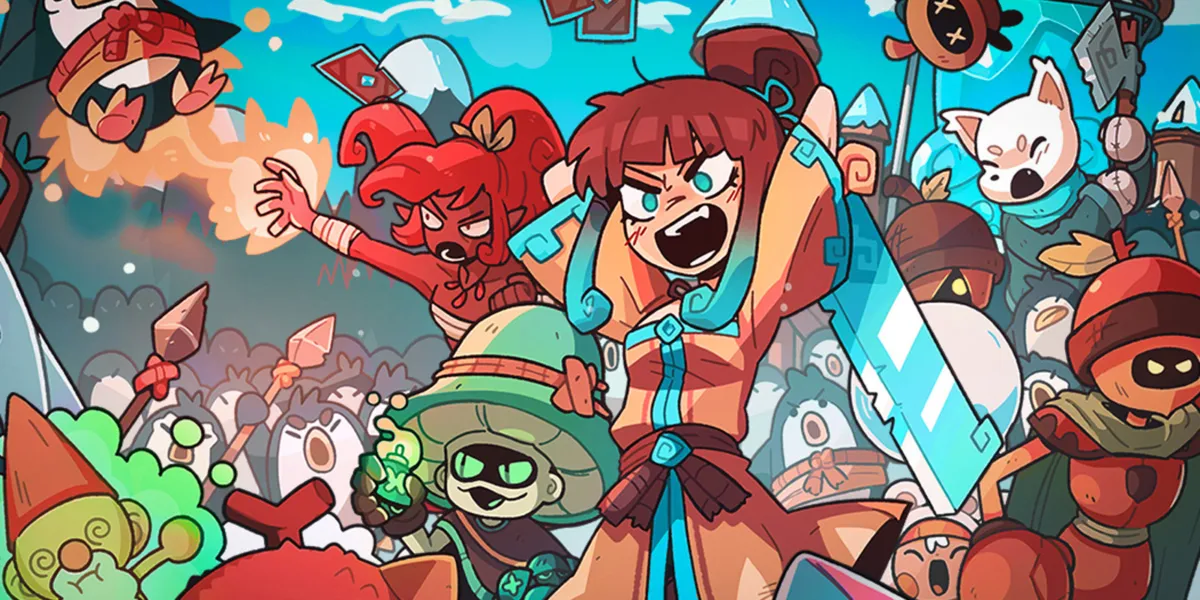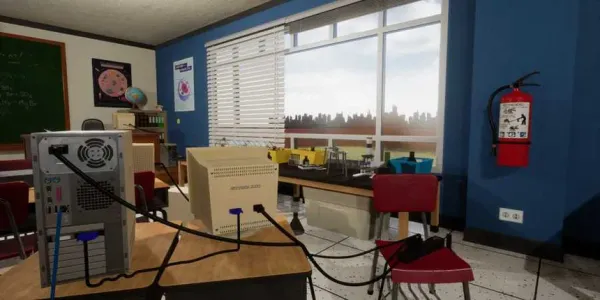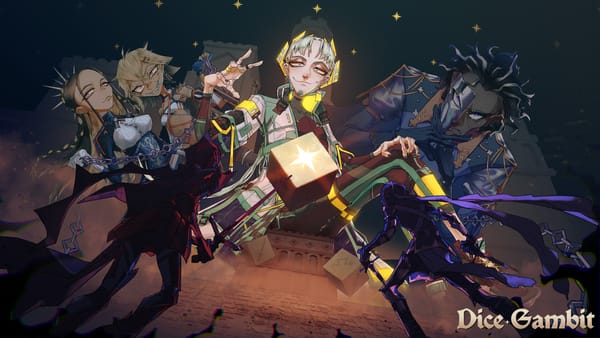Wildfrost is a an out of control roguelike full of charm

Written by Blue
The first word that came to mind when I booted up Wildfrost was “charm”. It is a charming game, with charming visuals, and charming atmosphere. Less obliquely, Wildfrost is one of those games that knows exactly what kind of experience it wants to provide. Even from the menu you get a feel of the jaunty upbeat tone of the game. The art style is probably what grabs most people’s attention. It’s simple, cartoony, adorable, and chock full of personality. All the elements in the game come together as a cohesive whole to give this impression of thoughtful and intentional design.

Which leads to the second word that came to mind as I poked around in the settings menu before my first run: “concern”. Casually situated in the bottom right of the game options are settings for blood (normal or rainbow) and the amount of said blood. “Ah it’s going to be that kind of game” I remember thinking to myself.

And honestly that’s been a good summary of my experiences with Wildfrost so far. Immediate charm from seeing an enemy followed by concern as a battle slowly but surely slips out of my control.
Wildfrost is set in a post-apocalyptic snowstorm where something has happened to the sun. Your goal is to survive an expedition into the heart of the storm and hopefully figure out what went wrong. There isn’t a ton of lore to be found in the main run of the game (I haven’t beaten the basic scenario yet as of the time of writing), but the setup is good and the presentation is effective. The menus are styled as the journals of the explorers who are attempting to find the heart of the storm and end the eternal winter. Simple, charming, and wait that’s blood on the page…

Wildfrost is upbeat at its core. It’s a fun trip into the wilderness to meet dangerous critters head on. But then you get the menu screen where half of it are the faded names of all the previous owners of the journal. Each and every one an explorer you (very specifically ME in this case) have failed.

I adore this. It’s the small and simple things. The page fills organically as you repeat runs and learn. The way the names slowly fade out over time as your churn through explorers. The way the names start to write over the space of the oldest leaders as runs wear on. I think this is also a good spot to mention that I’m not particularly great at Wildfrost. As evidenced by the number of names on this page at only a handful of hours in. I am totally charmed and mildly concerned at how bad I am at keeping expedition leaders alive.
Wildfrost is another entry in the card-based roguelike genre ala Slay the Spire or Monster Train. But something that may not be obvious from just a glance at the game is the speed of it. A standard run is only really about 9 fights long. Between every fight you will have an opportunity to improve your deck in some way. Pick up new cards, new allies, and new charms that augment your cards. At these points you’re hoping to find some synergies fast because the enemies ramp up whether you’re ready for them or not.
This is where I was somewhat surprised by the game. I grew up on big number RPGs like Final Fantasy so whenever I see games that handle small numbers well, I immediately pay attention. Wildfrost knows how powerful increasing (or decreasing) a single number by 1 can be.
Case in point: Turns are somewhat synchronous in nature. After every action by the player, everything on the board ticks down their action counter by 1. If it hits 0, they perform their attack which often has another effect associated with it. This means that unlike most other card-based games you can’t string together a million actions back to back on your turn for powerful swings. You have to always consider the enemies’ state and make a choice on whether you can do something offensive or be forced to play defensive.

Managing the life totals of up to 6 friendly units (including the leader who mustn’t die or the run ends) and the abilities and countdown timers of up to 6 enemy units can get a little overwhelming. That big boss monkey sure has a lot of attack. But I have 7 turns before I get destroyed by him. The monkey behind him attacks every turn and gets stronger when it does. The Pepper Witches are all going to buff each other if not dealt with at the same time. Hmmm!
The game’s mechanics are approachable with simple effects and small numbers. That makes it easy to digest individually while also scaling rapidly in complexity when multiple things happen at once. It’s so very charming… but I am also concerned about making it through this fight now.
To offset how quickly fights spiral out of your control, Wildfrost is fairly quick on the reset. There isn’t much in terms of basecamp management to handle like say a Rogue Legacy. In the more traditional roguelike fashion you can’t increase your overall power. To begin with you only have one starter deck available. As time goes on you gain access to 3 possible starter decks represented by 3 different tribes in the world: The Snowdwellers, Shademancers, and Clunkmasters. You can also unlock more items, companions, and charms as you meet challenges that the game sets out for you.

These aren’t added to your decks immediately, but rather become things to find in the run. The designs seem conservative and more aimed at enabling new playstyles rather than making you punch harder. Sidegrades galore to support the various mechanics in the game such as freezing the enemy, poisoning the enemy, or strapping bombs to them that explode on hits. While I’ve come close to the end of the game once, I still have a good chunk of unlockables to pursue as I keep churning through runs.
Wildfrost is a very intelligent and purposefully designed game filled to the brim with charm. In my personal case, the aesthetics of the game is a helpful balm to how quickly the game spirals out of my control and I’m forced to start over because of a silly mistake. A standard run looks to be around 9 battles. That number doesn’t seem high, but the pace that the enemies ramp up is almost unforgiving. This particular flavour of card game is all about finding your shtick fast and then making it as effective as possible in a short amount of time. If the RNG fails you, fret not. Just start over and hope to do better. There is a surprising amount of variance in the archetypes you can build in the game for you to mess around with.
The game is the full package of tone perfect aesthetics, fun music, and interesting card-based interaction. This isn’t a full review. I haven’t experienced a few key things in the game (e.g. the standard run’s ending). But even at this point I can see that Wildfrost is a great game and I think if you go in with the right expectations, you’ll have a ton of fun. The universal countdown system that all units on the field share makes the fight decisions sticky and interesting. If that sounds like your jam, I absolutely recommend checking it out.



